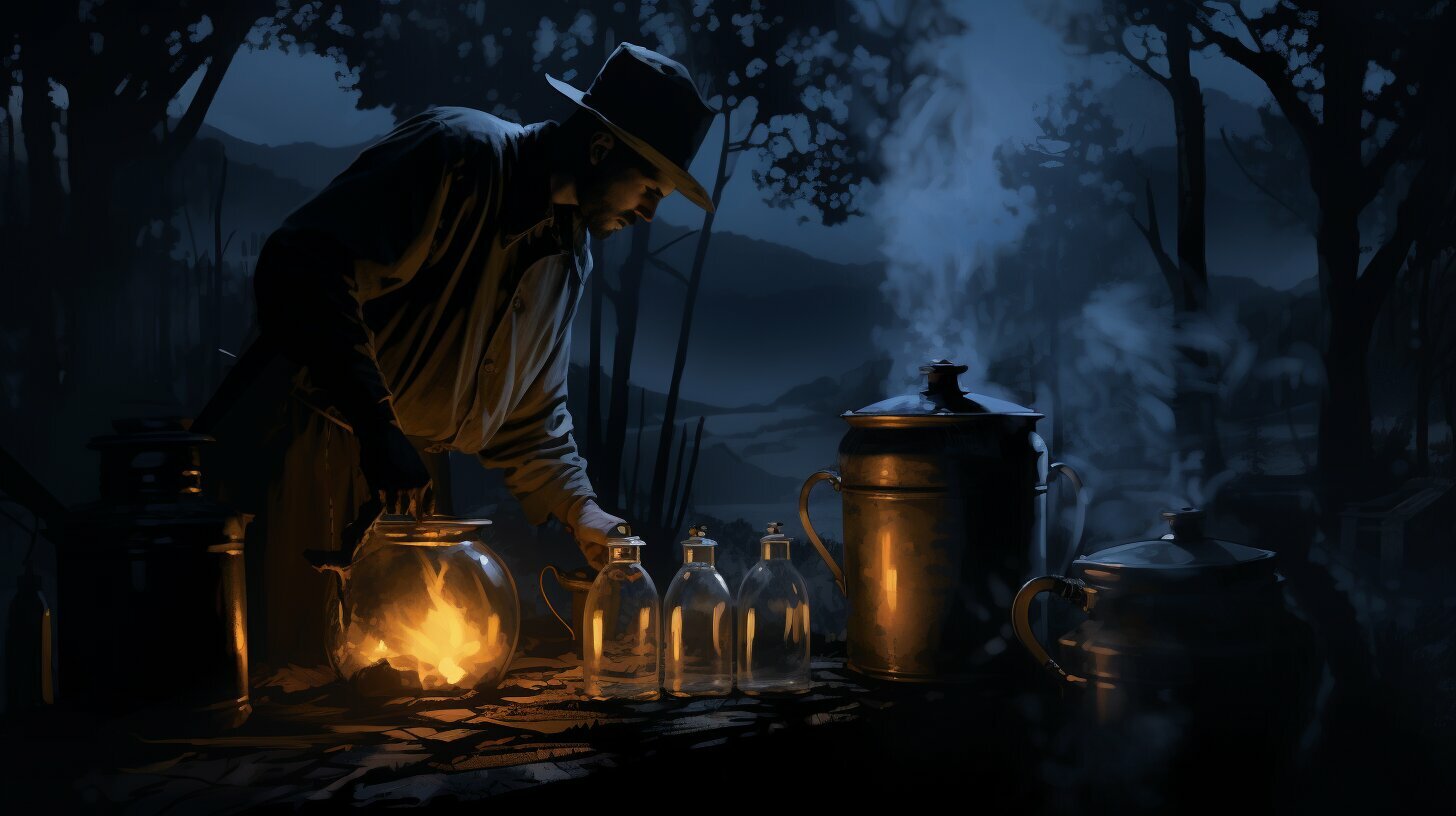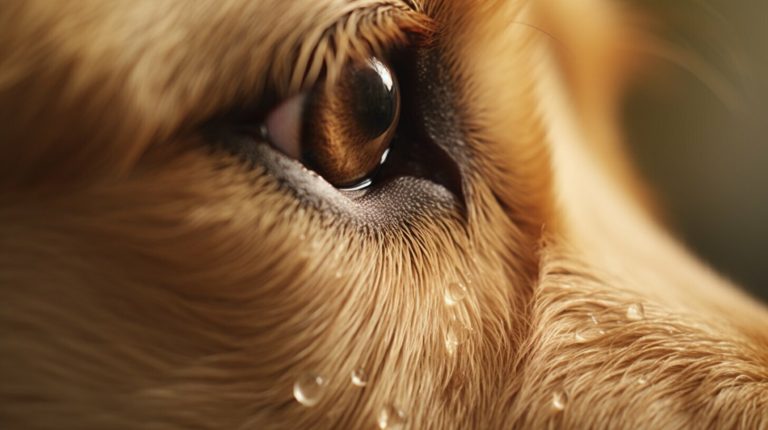Unveiling the Mystery: Why is it Called Moonshine?
Moonshine, the enigmatic concoction that has captivated generations, has a name steeped in clandestine tradition and hidden folklore. This illicit spirit derives its name from the way it was distilled under the cover of darkness, harnessing the mystical glow of the moon. But the origins of “moonshine” go even deeper, originating in Britain as the verb “moonshining” before crossing the Atlantic to become synonymous with illicit alcohol production during the Prohibition era.
Key Takeaways:
- Moonshine gets its name from its method of distillation under the light of the moon, a practice born out of necessity during the Prohibition era.
- The term “moonshine” originated in Britain as the verb “moonshining” before making its way to America.
- Moonshine was produced illegally in the backwoods to avoid high taxes and regulations, leading to the association of secrecy and hidden operations.
- Although moonshine typically refers to un-aged whiskey made from corn mash, it can encompass any illegally produced alcohol.
- Legalized moonshine still carries the name “moonshine” due to its production methods and recipes, maintaining the allure and mystique.
The Origins of Moonshine
To understand why it’s called moonshine, we must first delve into the intriguing origins of this term. The word “moonshine” can be traced back to its British origins, where it was used as a verb – “moonshining.” The verb originated from the act of distilling alcohol illegally during the night, under the light of the moon. This illicit practice eventually made its way across the Atlantic to America, where it took on a whole new meaning.
In America, moonshine production gained popularity during the Prohibition era, when the government imposed high taxes on alcohol during the Civil War. Moonshiners, driven by the desire to avoid these taxes and make a profit, set up their distillation operations in the backwoods and operated covertly, away from prying eyes. They would distill their alcohol late at night, relying solely on the light of the moon to guide them in their secret craft. Hence, the name “moonshine” was born, forever associating this illegal spirit with the mystique of the moon and the hidden world of underground distilleries.
Moonshine typically refers to un-aged whiskey made from corn mash, but it can also encompass any illegally made alcohol. Even though legalized moonshine exists today, it is still affectionately referred to as moonshine because it is produced using the same traditional methods and recipes. The allure and nostalgia attached to the name have persisted, reminding us of the rich history and rebel spirit associated with this infamous beverage.
The Origins of Moonshine
| Key Points | Factual Data |
|---|---|
| Etymology of “moonshine” | The term originated from Britain as the verb “moonshining,” which referred to illegally distilling alcohol at night. |
| Prohibition era | Moonshine production surged during Prohibition, when moonshiners operated clandestinely in the backwoods. |
| Traditional methods | Moonshine is still made using the same methods and recipes, even in legalized forms, preserving its historical significance. |
Despite the risks and challenges faced by moonshiners of the past, their rebellious spirit lives on in the legacy of moonshine. Today, the name moonshine continues to evoke images of hidden stills, secret recipes, and the thrill of indulging in a spirit with a colorful history. So, raise a glass of moonshine and toast to the moonlit nights that gave birth to this legendary drink.
Moonshine during Prohibition
As the United States grappled with the aftermath of the Civil War and the imposition of high taxes on alcohol, a clandestine industry known as moonshine emerged in the shadows. Moonshiners, driven by the desire to avoid these taxes, took their operations underground and began producing alcohol illegally. In the vast backwoods of America, away from prying eyes, they perfected their craft, distilling their potent spirits late at night using only the light of the moon. This secretive and illicit production gave rise to the name “moonshine.”
The Prohibition era, which lasted from 1920 to 1933, further fueled the demand for moonshine. With the nationwide ban on the production, sale, and distribution of alcoholic beverages, the moonshine industry thrived. The backwoods became the prime locations for hidden stills, where untaxed and unregulated alcohol was brewed. Moonshiners used ingenious methods to avoid detection, such as camouflaging their stills in the underbrush or converting their vehicles into mobile distilleries to outrun law enforcement.
During this time, moonshine became synonymous with rebellion and defiance. The production and consumption of illegal alcohol became a form of resistance against the government’s attempt to control personal liberty. The clandestine nature of moonshining added to its allure, and it became a symbol of independence and self-reliance. Despite the risks involved, many Americans turned to moonshine as a means to make a living and to enjoy a forbidden pleasure.
Moonshine Terminology
Throughout its history, moonshine has been associated with a unique vocabulary and terminology. Moonshiners developed their own slang to communicate discreetly and to avoid drawing attention to their illegal activities. Terms like “white lightning,” “mountain dew,” and “hooch” were used to refer to this potent and illicit spirit. These colorful nicknames added to the mystique surrounding moonshine and continue to be used to this day.
| Moonshine Terminology | Definition |
|---|---|
| White Lightning | A term used to describe highly potent moonshine, typically clear and colorless. |
| Mountain Dew | A slang term for moonshine that originated in the Appalachian region. |
| Hooch | A colloquial term for illegally produced alcohol, often associated with makeshift or low-quality distillations. |
Today, while the production of moonshine has been legalized in some areas, it continues to be referred to as moonshine due to its association with the traditional methods and recipes used by moonshiners. This enduring label serves as a reminder of the rich history and cultural significance of this once-illicit spirit.
Moonshine Today
While moonshine is often associated with illegal activity, there is a legal side to this spirited drink that has gained popularity in recent years. With the rise of craft distilleries and the demand for unique and artisanal spirits, legalized moonshine has found its place in the market.
One of the reasons for its appeal is the rich history behind moonshine. As mentioned earlier, moonshine has its roots in the illicit distillation of alcohol during Prohibition. Today, distilleries that produce legal moonshine pay homage to this history by using traditional methods and recipes. They aim to recreate the authentic flavors and character of the original moonshine, bringing a taste of the past to the present.
Moonshine Terminology
When it comes to legalized moonshine, the terminology remains the same. Moonshine is typically made from corn mash, giving it a distinct and robust flavor. It is often un-aged, allowing the raw and untamed characteristics of the spirit to shine. This sets it apart from traditional whiskeys, which usually undergo a maturation process in barrels.
| Term | Meaning |
|---|---|
| White Lightning | A nickname for moonshine that refers to its crystal-clear appearance and potency. |
| Mountain Dew | This term is often used interchangeably with moonshine, especially in the Appalachian region. |
| Hooch | A slang term for illegally distilled alcohol, including moonshine. |
Legalized moonshine has gained a loyal following, attracting enthusiasts who appreciate its historical significance and unique flavors. It provides an opportunity to savor a piece of American history while supporting local distilleries that stay true to the legacy of moonshine production.
| Moonshine Name | Description |
|---|---|
| Legal Moonshine | Moonshine that is produced legally, following the regulations and guidelines set by the government. |
| Artisanal Moonshine | Moonshine crafted in small batches using traditional methods and high-quality ingredients, often made by independent distilleries. |
Moonshine’s Aliases
Moonshine may go by many names, each with its own unique history and regional associations. One popular moniker for this illicit spirit is “white lightning,” a term that originated in the southern United States. The name is said to reflect both the clear color of the moonshine and its potent, lightning-fast effects on those who consume it.
Another nickname for moonshine is “mountain dew,” a term that has its roots in the Appalachian region. In the early 20th century, this term was used to describe homemade spirits produced in the mountains, often hidden away from prying eyes. The word “dew” adds an air of mystery and secrecy to the already enigmatic reputation of moonshine.
One more popular name for moonshine is “hooch,” a term that emerged during Prohibition in the 1920s. This slang term was used to describe any type of illegal alcohol, including moonshine. It is believed that “hooch” originated from the term “houchen,” meaning “to drink excessively” in German. The word eventually made its way into American slang and became synonymous with contraband spirits.
| Moonshine Aliases | Origin |
|---|---|
| White Lightning | Southern United States |
| Mountain Dew | Appalachian region |
| Hooch | Prohibition-era slang |
As you can see, moonshine has a rich tapestry of names and nicknames that evoke different aspects of its history and cultural significance. Whether you refer to it as white lightning, mountain dew, hooch, or simply moonshine, this potent spirit continues to captivate the imaginations of people around the world.
Conclusion
The captivating origins and rich history of moonshine have firmly cemented its place in American folklore, leaving us with a lasting curiosity about its hidden past.
Moonshine gets its name from the way it was distilled during the night using moonlight. The term originally came from Britain, where it was used as the verb “moonshining”. In America, moonshiners began making alcohol illegally to avoid high taxes imposed during the Civil War. They operated in the backwoods and distilled their alcohol late at night using only the light of the moon, which is how the name moonshine came to be.
Moonshine typically refers to un-aged whiskey made from corn mash, but it can also include any illegally made alcohol. Although legalized moonshine exists, it is still referred to as moonshine because it is made using the same methods and recipes. Moonshine is also known by other names such as white lightning, mountain dew, and hooch.
The enduring allure and mystique surrounding moonshine continue to capture the imagination of people today. Whether it’s the stories of hidden stills in the Appalachian mountains or the thrill of trying a sip of the potent spirit, moonshine remains a symbol of rebellion and ingenuity in American history.
FAQ
Why is it called moonshine?
Moonshine gets its name from the way it was distilled during the night using moonlight. The term originally came from Britain, where it was used as the verb “moonshining”.
What is the origin of moonshine?
Moonshine’s origins can be traced back to its British roots, where it was originally known as the verb “moonshining”.
How did moonshine become associated with illegal alcohol production?
In America, moonshiners began making alcohol illegally to avoid high taxes imposed during the Civil War. They operated in the backwoods and distilled their alcohol late at night using only the light of the moon, which is how the name moonshine came to be.
Is moonshine still produced illegally today?
While moonshine is no longer produced illegally on a large scale, there are still small-scale operations that continue to produce it illegally. However, legalized moonshine also exists and is made using the same methods and recipes, which is why it is still referred to as moonshine.
What are some other names for moonshine?
Moonshine is known by various names such as white lightning, mountain dew, and hooch.
- Discovering Why Do Women Wear Lipstick: A Deeper Look - 19/12/2023
- Why Do Golfers Only Wear One Glove? - 16/12/2023
- Why Don’t Hobbits Wear Shoes? - 14/12/2023
Hi, I’m Rhiannon, the lead author behind The News Wire. As a passionate journalist, I strive to bring you the latest news and updates from all over the world. With a keen eye for detail and a dedication to unbiased reporting, I aim to deliver well-researched and informative articles that keep you informed and engaged. From breaking news to in-depth analyses, I cover a wide range of topics with the aim of keeping you in the loop. Join me on The News Wire as we explore the dynamic and ever-changing landscapes of global events, uncovering the stories that matter most.






